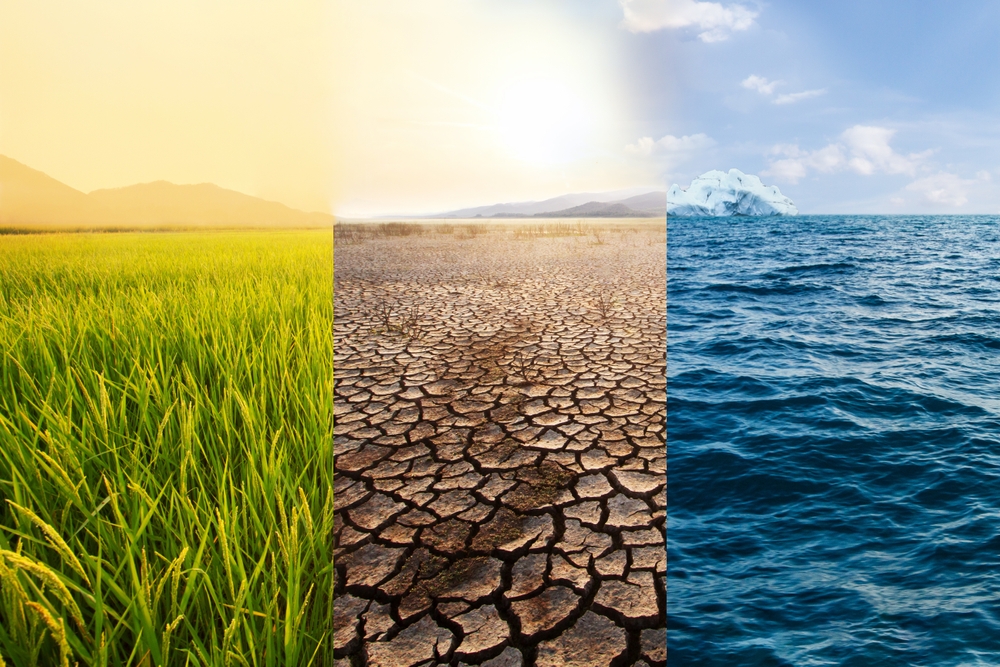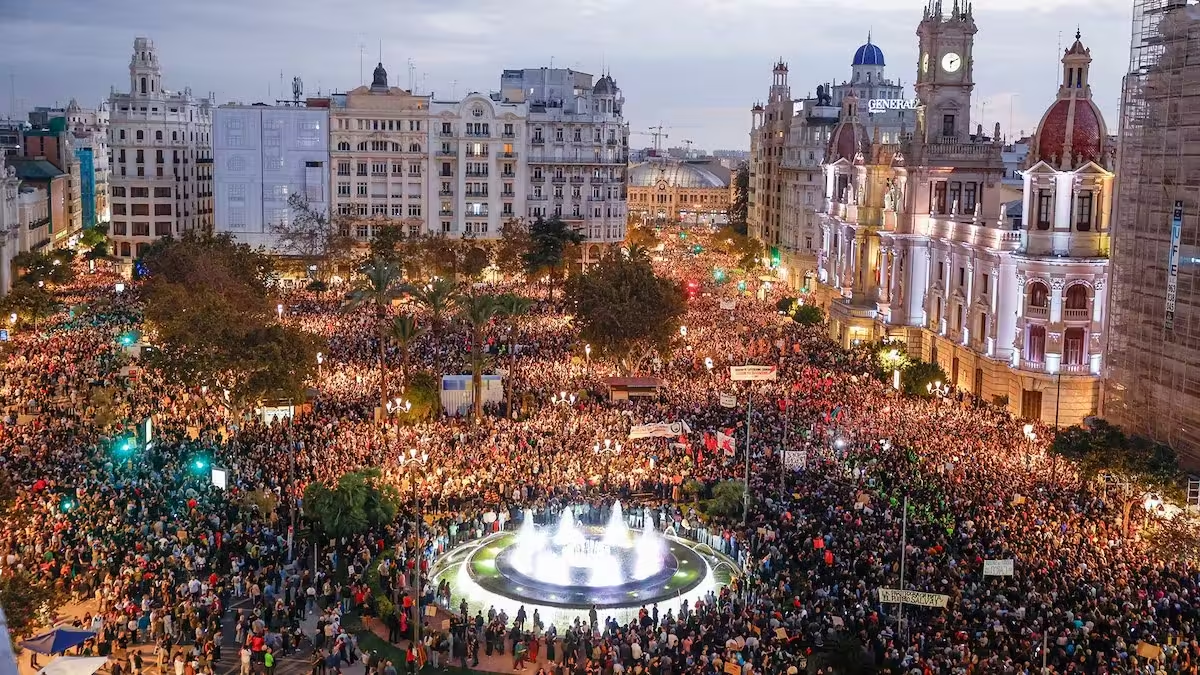Are We in a Natural Cycle? Unpacking Climate Change vs. Historical Trends
Spain has been experiencing a drought for over a year which is directly impacting its residents. Parts of Spain including Andalucía and Cataluña are subject to water restrictions which include nighttime water cuts and a limit of 200 litres per person per household a day. The Province of Malaga is currently debating if swimming pools may be filled this summer and if so which ones. With drought on everyone’s minds, the conversation about climate change and its effects is a hot topic of conversation.
Some are adamant that climate change is the reason for Spain’s drought and other chaotic weather events in the world. Others claim the Earth is just in a natural cycle. In this article, we will take a look at Milankovitch cycles and their impact on the climate, climate change vs. cycles, and human activities and their impact on the environment.
What are Natural Cycles?
Milankovitch cycles describe the effects of changes in the Earth’s movements on its climate over thousands of years. They are named after the Serbian geophysicist and astronomer Milutin Milanković. In the 1920s, he proposed an idea that suggested changes in how the Earth moves in space (like how much it tilts, how its orbit changes shape, and how it wobbles) could create patterns in how much sunlight different parts of the planet receive throughout the year. He believed that these changes in sunlight could have a big impact on Earth’s climate over long periods.
What are the effects?
The Earth’s path around the Sun isn’t a perfect circle, it is more like a slightly stretched-out circle called an ellipse. This ‘stretching’ can vary over time, sometimes the orbit is closer to a perfect circle, and at other times it is more stretched out. When the orbit is more stretched the Earth gets a bit closer to the Sun at one point and a bit further away at another. These changes can play a role in how our climate changes.
A Closer Look
Scientists study materials taken from the Earth, like ice cores from Antarctica and cores from deep-ocean sediments and lake bottoms, to understand past climate cycles. For example, air bubbles trapped in Antarctic ice contain different oxygen isotopes that can tell us about global temperatures when the ice formed. By analyzing this data, scientists have confirmed that changes in Earth’s climate over long periods are linked to variations in how much sunlight different parts of the Earth receive, as suggested by the Milankovitch hypothesis.
Further evidence comes from studying deep-ocean cores and lake sediments. Additionally, records from a rock core drilled in Arizona, as well as cores from New England, show patterns that match Earth’s orbital variations going back millions of years. This research helps us understand how Earth’s climate has changed over time and what factors have influenced these changes.

Climate Change vs. Cycles
It was first thought that these cycles occurred every 41,000 years however further research showed that the last ice age cycle peaked around 21,000 years ago. There are several explanations for this discrepancy. Some suggest that factors like carbon dioxide levels or the dynamics of ice sheets could be influencing the climate cycle. If there are more ice sheets the Earth reflects more sunlight away from the planet and vice versa if there are fewer ice sheets more sunlight is absorbed and not reflected away. This in turn changes the pace of climate change and the rate of the Earth’s natural cycles.
After the last ice age, the earth then entered 10,000 years of warming bringing us to the climate we have now according to MIT. In that period the Earth heated by 6º Celsius (11º Fahrenheit) and carbon dioxide in the atmosphere rose by 50%.
Fossil Fuels: Effects on Climate Change
After the ice age, the sea level rose, and ice sheets melted which lead many to the conclusion that we are entering a new cycle much like the previous ice age and subsequent melting. But scientists had predicted the Earth would enter a cooling cycle although further research is being carried out to confirm this. Scientists do agree that the cause of today’s climate change is different from the previous changes caused by the planetary forces detailed previously. By burning fossil fuels we have put large amounts of carbon dioxide into the atmosphere very quickly which instigated the warming.

Even though the planet has seen a large increase in carbon dioxide previously it has never experienced it at such a rate. It usually increases at a much slower rate and even then there were dramatic changes and weather patterns. As carbon dioxide is rising at 100 times the rate scientists are predicting the current climate change will be even more disruptive.
Impacts and Solutions
A small increase in average temperatures has a big impact on heat extremes making hot days even more likely and intense. According to the WWA in April of this year, West Africa experienced a heat wave with areas reaching 48ºC. They concluded that this heatwave would not have occurred without human interference with global warming. They state that this trend is set to continue and heatwaves like these will be ten times more likely to occur. The rapid loss of green spaces and the increase in urbanization are having an impact on the increase of heat waves.
Impacts in Spain
In Spain there has been a noticeable increase in the temperatures and rainfall has been scarce. Every few months Spain seems to be breaking new temperature records. A lot of international residents leave Spain during the months of July and August and local governments are concerned about the impact the lack of water and high temperatures will have on tourism.
What Can We Do?
Governments and scientists will continue to work on possible solutions to the many issues related to global warming but what can we do?
It is important to keep the conversation active, spread the word, and campaign. Keep the pressure on leaders and local governments.
Remember that small actions that we all commit to like walking or cycling instead of taking the car when possible can have an impact. Improve insulation in your home, installing solar panels, and reusing and recycling are all great ways to contribute to the solution.
Eating a more plant-based diet, shopping local, and choosing fruit and vegetables that are in season. As well as being careful not to waste food are simple actions everyone can take.
It is easy to feel powerless given the magnitude of the problem but we can all play our part in the solution.

In conclusion, Spain’s ongoing drought has deeply affected its residents, leading to water restrictions in various regions. As debates arise over the filling of swimming pools in Malaga, the conversation surrounding climate change intensifies. While some attribute Spain’s drought to natural cycles, others point to human-induced climate change. Exploring Milankovitch cycles sheds light on Earth’s historical climate patterns, revealing the intricate interplay of orbital variations and climate shifts. However, the rapid increase in carbon dioxide levels from human activities distinguishes today’s climate change from past cycles, amplifying its disruptive potential.
With heatwaves becoming more frequent and intense, and tourism in Spain facing uncertainties due to water scarcity and soaring temperatures, collective action is imperative. Governments, scientists, and individuals must collaborate on solutions, from advocating for policy changes to adopting sustainable practices in daily life. Though daunting, addressing climate change requires a collective effort, emphasizing the significance of individual actions in mitigating its impacts.
Let us know what you think, is the planet in a natural cycle, or is the global warming crisis man-made?
Share this content:




3 comments